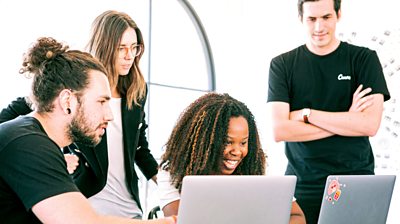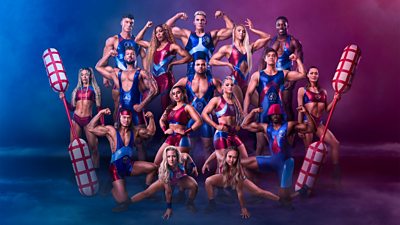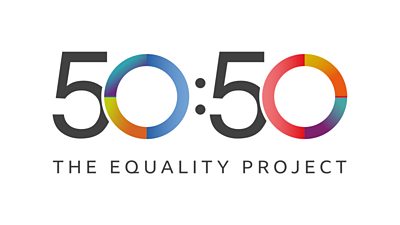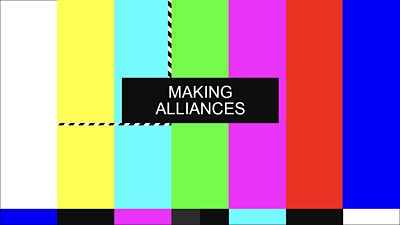Television production

The excitement of the production coming together makes this a great time to ensure your production is inclusive, representative and accessible for all.
Check out how you can achieve this simply and effectively across the production phase:
Having a diverse range of creative talent on our productions means we need to think about how we enable people to bring their best selves to work.
With 1 in 4 of us having a disability, many unseen, making your meetings as inclusive and accessible as possible takes some thought, particularly as colleagues may choose not to disclose their disability. But it needn’t be hard work!
Here are a few practical steps to help cater for as many needs as possible:
- Be clear about the aim and agenda for the meeting
- Set a time limit and stick to it
- If using Zoom enable live transcripts as standard and consider using many of the other available on the platform
- Ahead of meetings remind teams that information can be provided in alternative formats or ahead of time
When location scouting keep accessibility in mind, as it's key to making sure your studio, set or unit location is as inclusive as possible.
There are many things you can do to achieve this:
- Provide a step-free route all the way from entrance to seating. Alter the set to accommodate a disabled person. Make corridor widths on this route at least 800mm wide
- Bring in accessible washroom facilities and catering areas
- Provide disabled parking available on site or nearby
- Use clear signage in a large font
- Ensure all doors are easy to open and close If not, provide someone to be on hand to open and close them
- Make sure there is an appropriate lit space for an interpreter, near to where your disabled guests or actors may be positioned and use additional seating for a companion if required
- Provide an induction loop or other sound enhancement in all rooms to be used. Check them regularly.
- Give audience co-ordinators, stewards or runners disability awareness training, including how to guide blind or partially sighted people
Like other aspects of planning a production, remember to take on board accessibility requirements when camera blocking.
Whether you're in the studio or on location, your talent and production team may have additional needs which will need to be planned for. For example, providing additional time in the schedule and making sure that sets and locations are suitable for people with mobility requirements.
When organising the transport and accomodation for your cast and crew, there are some things to keep in mind to meet accessibility needs on location:
- Be mindful that travel can be complicated for some colleagues
- Make sure all your hotels for cast and crew have accessible rooms and facilities for those that require them
- Check that transport, taxis and hire cars meet the accessibility needs of your team
- Build time into your production schedule to accomodate the logistical challenges that are faced by people with accessibility needs
Maximising the diversity of your production, means thinking about everyone onscreen – not just the main talent. Extras and stand-ins are a great opportunity to ensure diverse representation and an inclusive production environment. Other things to think about include:
- Use websites which meet accessibility guidelines to recruit extras
- Check your casting agency has a proven track record in promoting diversity
- Offer sign language interpretation and include information that such assistance will be available in casting call-outs
- Remember that some disabled people may wish to bring a personal assistant or assistance dog. Check there is space for them
- If a visually impaired person requests information, ask which is the most appropriate form for them e.g. large print on A4 paper, braille or by email
- Be aware that not everyone will make their needs known and some things may be taken for granted such as wheelchair accessibility. Don’t be afraid to ask for any access needs at the earliest point possible
It's important that all on-screen talent, regardless of their background, look and feel their best on productions. Checking that your hair and makeup team are skilled at working with actors and presenters who are Black, Asian and Minority Ethnic is just one way of creating an inclusive environment on productions.
We all like to work with people we have worked with before, but entry roles such as runners are an important opportunity to develop and cultivate new talent. A few ways to make the most of this golden opportunity to broaden the diverse representation of your production are:
- Actively engage with companies, networks and groups who are working with diverse talent in your local area
- Contact organisations and build relationships with companies who train individuals for a career in TV and start a talent pipeline
- Avoid using unpaid internships as this means only people who can afford to work for nothing will take up those opportunities. Everyone working on a production should be paid for their role
It’s important to check your live shows are accessible for audiences from the initial planning stages. Do put a line in your budget from the start to make sure audience accessibility isn't compromised further down the line when budgets are stretched.
Check out some other things to keep in mind:
- Use websites which meet accessibility guidelines to recruit audiences
- Check your ticketing agency has a proven track record in promoting diversity
- Offer sign language interpretation and include information that such assistance will be available in audience call-outs
- Ask audiences in advance to notify you if they have any access requirements
- Remember that some disabled people may wish to bring a personal assistant or assistance dog and check there is space for them
- Many disabled people use a personal assistant to support them. A ticket should be made available for them to accompany the disabled person to the recording
- Information that is sent out with the tickets should be in at least size 14 font to make it clear for people to read
- If a visually impaired person requests information, ask which is the most appropriate form for them e.g. large print on A4 paper, braille or by email
- When sending out the tickets ask again for any access requirements and detail what features will be available at the studio (such as a hearing loop). The more information you give out before the day of recording the better
- Be aware that not everyone will make their needs known and some things may be taken for granted such as wheelchair accessibility and hearing loops being available
- Think about the dates and times of your recording and whether they have an effect on audiences, for example those with caring responsibilities or who need to travel by public transport
- Remember that some of this additional support will have cost implications
Find out more in our TV production guide
- Accessible and inclusive meetings
- Maximising your onscreen diversity: audiences & extras
- Diamond diversity monitoring
Discover more
-

±«Óãtv Diversity Commissioning Code of Practice 2023/24
An update of progress on the ±«Óãtv Creative Diversity Commitment -

Elevate
Supporting deaf, disabled and neurodivergent talent in the TV industry -

Reflecting our world
Inspiring organisations around the globe to create content that fairly represents our society. -

Creative Allies
A plan for real change by using allyship to unleash, nurture and develop the creativity
